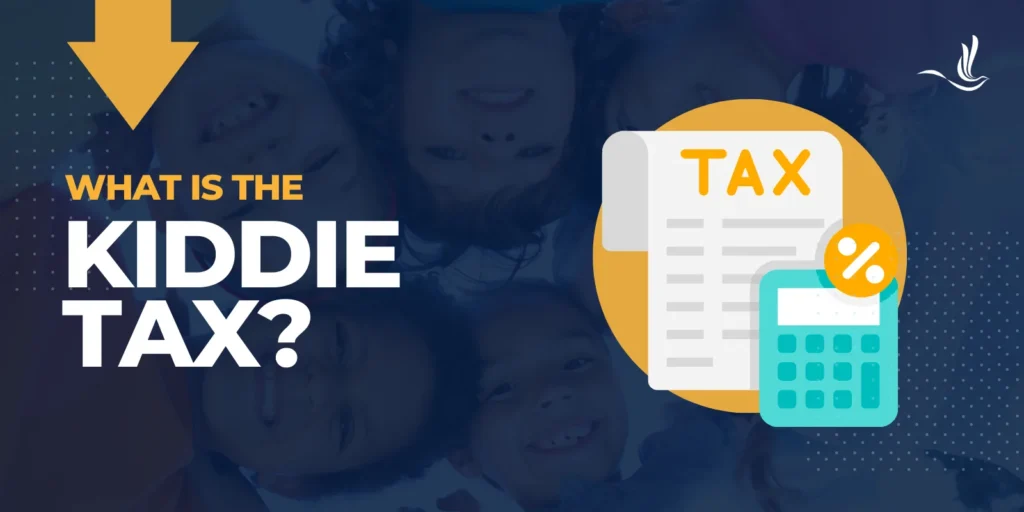
Navigating the complexities of taxes can be challenging for anyone. When it comes to families with children, there are additional considerations to be aware of. One such consideration is the IRS Kiddie Tax. This set of rules is specifically aimed at taxing unearned income of certain children at their parent’s tax rate. Understanding how the Kiddie Tax works is crucial for parents to effectively manage their tax liabilities. Let’s delve deeper into what the Kiddie Tax entails and how it might affect your family’s tax situation.
What is the Kiddie Tax?
The Kiddie Tax is a tax provision established by the IRS aimed at preventing parents from shifting investment income to their children to take advantage of their lower tax rates. Specifically, it applies to children who have unearned income above a certain threshold. It applies to children under 19 years of age or under 24 if they are full-time students. Unearned income includes interest, dividends, capital gains, rents, and royalties, among other types of passive income. However, other common examples include taxable scholarships and income produced by gifts from family.
Exemptions
The Kiddie Tax does not apply to all children. If a child meets any of these criteria, they will be exempt from the Kiddie Tax rules.
- The child has no living parents at the end of the tax year.
- The child got married and filed a joint return for the tax year.
- The child is not required to file a tax return for the tax year.
- The child is totally or permanently disabled.
- The child is emancipated.
How Does it Work?
The first $1,250 of a child’s unearned income is not taxed. However, the next $1,250 is subject to the child’s tax rate of 10%. Additionally, any income that exceeds $2,500 is taxed at the greater rate of the child’s tax rate or the parent or guardian’s tax rate. For example, if a child had $3,000 in unearned income, $500 would be subject to the Kiddie Tax. Finally, the threshold will rise to $2,600 for tax year 2024.
For 2023, the standard deduction for a child is the greater of $1,250 or the child’s earned income plus $400, if you can claim them as a dependent. This is because $1,250 is the standard deduction for dependents. If you cannot claim the child as a dependent, they’d generally use the standard deduction of a single filer. This figure is $13,850 for 2023.
Examples
- Emily receives $3,000 in dividend income from stocks held in a custodial account in her name. Her parents’ marginal tax rate is 24%. Under the Kiddie Tax rules, since Emily’s unearned income exceeds the $2,500 threshold, the portion exceeding the threshold ($500) will be taxed at her parents’ tax rate.
- Consider a family with two children, Jack and Lily. Jack is 17 years old and earns $1,800 in interest income from savings bonds. Lily, on the other hand, is 20 and a full-time college student She receives $3,500 in dividends from investments. Jack’s income will be taxed at his individual tax rate of 10%. However, Lily’s income will be subject to the Kiddie Tax at her parents’ tax rates.
- 17-year-old Michael is legally emancipated from his parents. He earns $5,000 in interest income from a savings account in his name. Since Michael is emancipated, the Kiddie Tax does not apply to him. Therefore, his interest income will be taxed at his individual tax rate.
- Sarah, who is 18 years old, has a disability that meets certain criteria outlined by the IRS. Sarah receives $4,000 in dividends from investments. If Sarah’s disability qualifies her for an exception to the Kiddie Tax, her dividends may be taxed at her individual tax rate rather than at trust and estate tax rates.
How to Report Kiddie Tax
Reporting the Kiddie Tax on your tax return involves several steps. That said, it’s crucial to ensure accurate reporting to comply with the IRS. Calculate the child’s unearned income for the tax year. Remember, unearned income includes interest, dividends, capital gains, rents, and royalties, among other types of passive income. If the child’s unearned income exceeds the threshold, apply the Kiddie Tax rates to the portion of income exceeding the threshold. For 2023, unearned income up to $2,500 is taxed at the child’s rate. Any amount over $2,500 is taxed at the parent or guardian’s tax rate. This can be significantly higher than individual tax rates.
If the Kiddie Tax applies, use IRS Form 8615, Tax for Certain Children Who Have Unearned Income. This form helps determine the portion of the child’s unearned income subject to the Kiddie Tax. It also calculates the tax liability at the appropriate tax rate. Parents should attach this form to the child’s Form 1040. In some cases, the parent can include the child’s income on their return instead. They would do this with Form 8814, Parent’s Election to Report Child’s Interest and Dividends.
Tax Help for Parents
Understanding the Kiddie Tax is essential for parents who engage in financial planning strategies involving their children’s investments. While the Kiddie Tax aims to prevent tax avoidance, it can significantly impact the tax implications of certain investment decisions. Parents should consider consulting with a tax advisor or financial planner to develop tax-efficient strategies that align with their overall financial goals. Optima Tax Relief is the nation’s leading tax resolution firm with over a decade of experience helping taxpayers.
If You Need Tax Help, Contact Us Today for a Free Consultation